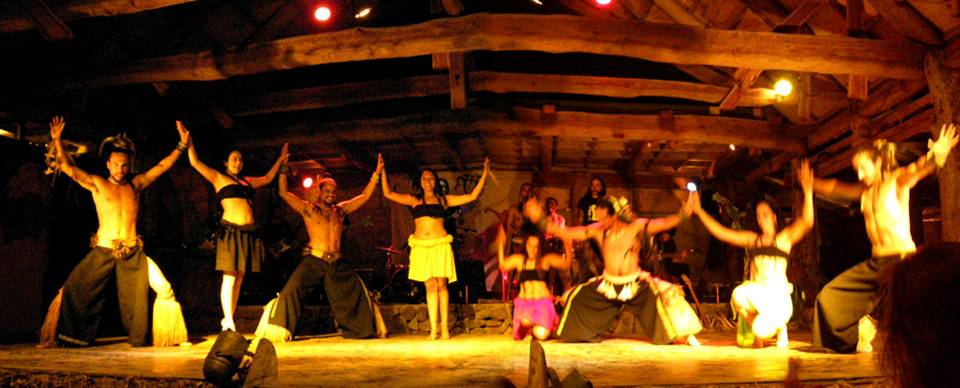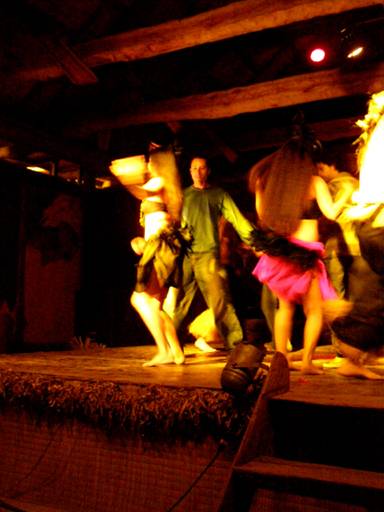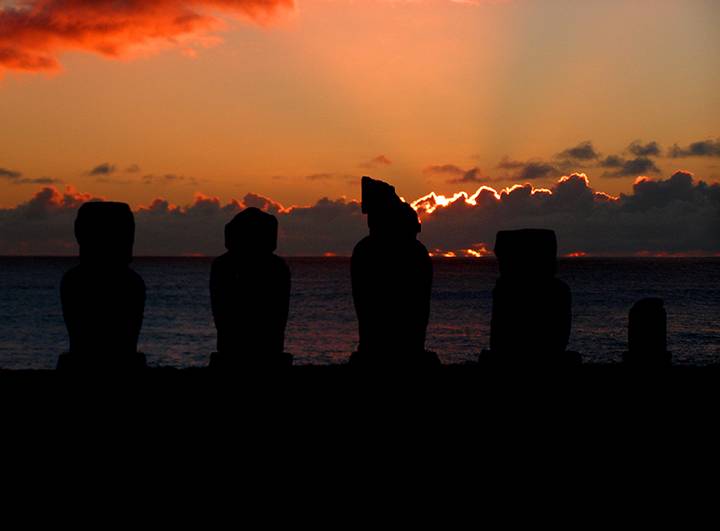|

With such an interesting history and art forms to explore, we forgot that Easter Island is also something of a sub-tropical
paradise. There is no land ownership, and laws prevent it from being built up
so the island is still very basic. We found a local islander with extra rooms
in her house that she rents out to tourists. Our room looked out onto the
sea.
 
There is something to be said about such isolation. The air we breathed had
not been touched by a city. The water was pure. The fish did not have
mercury/lead built up.

Pink sand beach (a bit oversaturated so the pink is hard to see).

Pretty views in all directions.

There were lots of these structures on the island. These are chicken coops
that the Rapanui had built. The original
descendents had actually brought chickens with them on their canoes from Polynesia, and chickens were an important part of their
diet.

Something shiny catches our eye down by the water.

These stones are perfectly round and smooth, and hold unusual magnetic
powers. A compass will not work in proximity with these stones. These rocks
cannot be found anywhere else on the island. It is assumed that the original Rapanui brought these stones with them on their canoes
all the way from Polynesia.

Easter Island is called the Navel of the
Planet because of its isolated central location, and this stone is called the
Navel of the Navel.

The great quarry, from which came all the rock needed to build the Moai.

Hundreds of unfinished Moai lay abandoned in the
soil, the development of which was interrupted by the wars that broke out and
eventually destroyed the civilization.

View from the quarry.

Two unfinished Moai lying head to toe.

Inset into the rock here was the largest Moai on
the island.

Walking around the “art studio”.

Stuck between a rock and a hard place.

Each Moai face is unique, based abstractly on an
important person from the tribe.

You lookin’ at me?

A night at the Roxmoai.

This one was not in the style of the rest. It appeared to be more
“human” with better developed legs in a kneeling position.

A view of Tongariki, the site of the most Moai. It is likely that the tribe at Tongariki
was the most powerful, and thus able to have the most Moai.

The 2nd one from the right has a red hat thing called a top-knot.
Actually, all the Moai have top-knots, but they
were all knocked off in the wars and now we cannot determine which top-knot
goes with which Moai.

Not the most comfortable position.

Carmel
demonstrates the acro-yoga goddess pose.

Smooch!

Ehh, no idea who came up with these ideas…

I’m flying! (The Moai right beneath me
totally looks like he’s looking at me in amazement).

Here is Carmel
doing the jumpy thing, just to show that I didn’t photoshop
it.

Almost hit my head on a cloud there.

Advanced yoga.

Even more advanced yoga.

Last shot of Tongariki, taken at sunrise on our
last day on the island.

Our trip happened to coincide with the festival Dia
de Carmen, which involved massive amounts of free food given out by 2
families. We didn’t have any plates so we grabbed some leaves and they
plopped the food right on. Sooo good.

We went to visit one of the three volcanoes (Orongo)
on the island. The top of the volcano looks like a crater.

Just off the coast of the Orongo volcano is the
venue for the Birdman Contest. In attempt to stop the wars, the Rapanui decided to hold a contest each year—the tribe
of the winner of the contest would then rule the whole island for the year. The
contest involved climbing down the cliff face, swimming out to the far
island, finding and grabbing an egg of a specific bird, then swimming back to
the main island with the egg. Unfortunately, the contest did not actually
quell the fighting.
 
These were houses built for the nobility to watch the Birdman Contest.

One night we went to see traditional Rapanui dance.

They told the story of their island through dance.

This guy portrays the Birdman Contest part where they swim out to the far
island.

This part conveys…wait, who is that dancing up on stage with the Rapanui girls?
   
   
Okay so they had this final audience participation dance where each of the
female dancers grabbed a guy, and each of the guy dancers grabbed a woman
from the audience. Carmel,
who was struggling to stay awake up until this point, was highly amused and
went rapid-fire on the photos.

What followed after the performance was perhaps the most memorable experience
from the trip. They continued to play music on the speakers, and there was a
bar at the back that was still open. But, all the tourists left immediately
except for us; and, the local Rapanui were just
hanging out having some drinks. So we were just sitting there trying to
figure out what was going on when one of the Rapanui
offered me a beer. I accepted and we got to talking (in Spanish). He got
really excited when he found out that I am an ecologist because the owner of
the club and his friends there that night were the leaders of the ecology
association for the island. So he called them over and we ended up talking and
drinking all night about all sorts of things, but primarily on the ecological
problems and solutions for the island. It was definitely a rare non-touristy
part of the trip that was very memorable. (Side story- at one point the
original Rapanui offered us some marijuana, and I
asked if it was legal on the island because they had dogs sniffing all the
bags at the airport. He told us not to worry, that there are only 4 police on
the island, and he was one of them…).

We explored a good part of the island by bicycle. Carmel can be seen riding past the big tree
by the side of the road.

Mo’ Moai.

Checking out Akema beach.

Pretty flowering small trees were noticeable throughout the island.

Akema beach Moai with
their top-knots.

The Tahai site was near the town, and a good place
to hang out and watch the sunset.

This is the first Moai I’ve shown with eyes
(slightly glowing in the dark). The eyes were very important, as this was the
source of their power.

A nice place for a bit of yoga.

Sun setting on Easter Island.

Not much light left.

Good night Easter Island!
|